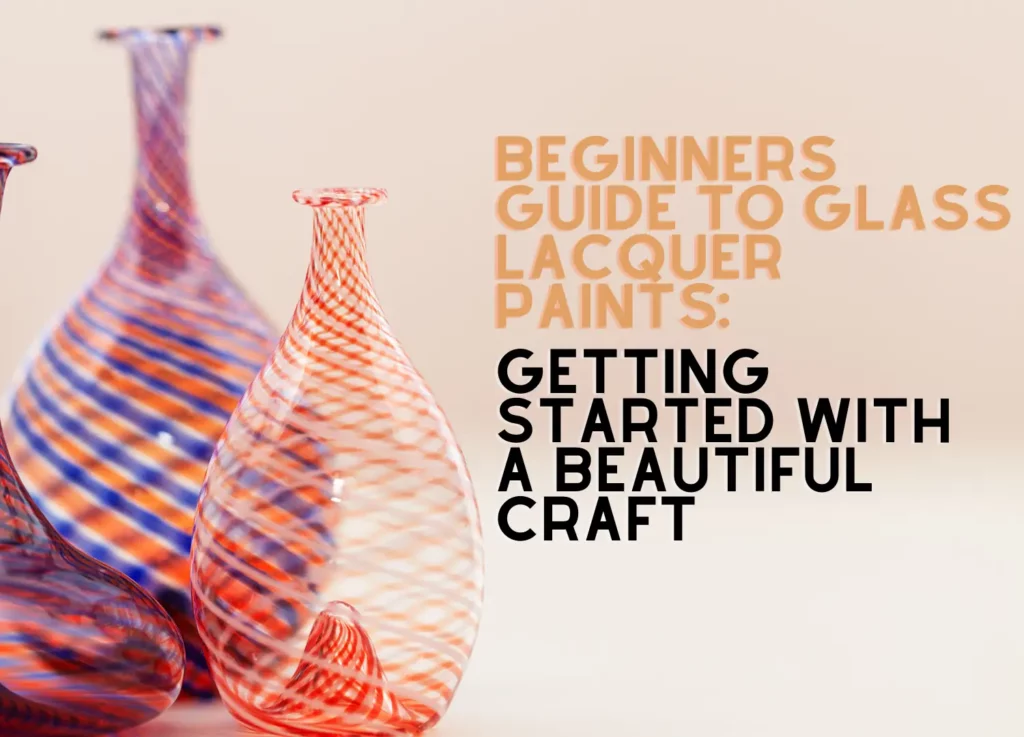Beginners Guide to Glass Lacquer Paints: Getting Started with a Beautiful Craft

If you’re looking to explore a beautiful and creative craft, glass lacquer painting is an excellent choice. This artistic endeavor allows you to transform ordinary glass objects into stunning pieces of art that can serve as decor or thoughtful gifts for your loved ones. In this beginner’s guide, we will cover all the essential aspects of glass lacquer paints to help you get started on your artistic journey.
Understanding Glass Lacquer Paints
Glass lacquer paints are specially formulated paints designed to adhere to glass surfaces. They come in various types, including transparent, translucent, and opaque finishes. These paints are water-based, making them easy to clean up, and they dry to a glossy and durable finish.
Getting Your Supplies Ready
Before diving into glass lacquer painting, gather the necessary supplies.
1. Glass Objects
Start with simple glass objects like vases, bottles, or jars. As a beginner, it’s best to avoid intricate shapes.
2. Glass Lacquer Paints
Invest in high-quality glass lacquer paints in different colors. Opt for a variety of finishes to experiment with various effects.
3. Brushes
Select soft-bristled brushes of different sizes. The brushes’ quality will significantly impact the final result.
4. Palette
Use a palette or a flat surface to mix and blend colors effectively.
5. Painter’s Tape
Painter’s tape will help create clean and precise lines.
6. Paper Towels
Keep paper towels handy for any spills or to wipe off mistakes quickly.
Preparing the Glass Surface
Before you start painting, ensure the glass surface is clean and free from any dust, fingerprints, or residues. Use rubbing alcohol and a lint-free cloth to clean the glass thoroughly. This step is crucial, as any impurities on the glass can interfere with the paint’s adhesion.
Exploring Different Techniques
1. Basic Painting
Beginners can start with basic painting techniques, such as brush strokes, blending colors, and creating simple designs. Allow yourself to experiment and get comfortable with the paint and brushes.
2. Stenciling
Stencils are a great way to add intricate designs to your glass objects. Secure the stencil on the glass surface with painter’s tape and apply the paint carefully.
3. Reverse Glass Painting
In reverse glass painting, you apply the paint on the opposite side of the glass, creating a unique and dimensional effect.
4. Splatter Painting
For a fun and abstract look, try splatter painting by flicking paint onto the glass surface with a brush or toothbrush.
Tips for a Successful Glass Lacquer Painting Experience
- Work in a well-ventilated area to allow the paint to dry properly.
- Start with lighter colors before moving to darker shades.
- Practice on spare glass pieces before working on your final project.
- Embrace imperfections, as they can add character to your artwork.
Conclusion
Glass lacquer painting is a captivating craft that offers endless possibilities for creativity. With the right supplies, techniques, and a willingness to explore, you can create stunning masterpieces that will leave everyone in awe.
FAQs
1. Can I use regular acrylic paints on glass?
While regular acrylic paints may adhere to glass, they are not as durable and long-lasting as glass lacquer paints. For the best results, it’s recommended to use paints specifically designed for glass surfaces.
2. Can I mix different brands of glass lacquer paints?
Yes, you can mix different brands of glass lacquer paints to create unique colors and effects. However, it’s essential to test the mixture on a spare glass piece before applying it to your final project.
3. How do I seal my glass lacquer-painted object?
Once your glass lacquer paint has dried completely, you can seal the artwork with a clear varnish or sealer. This will protect the paint and enhance its longevity.
4. Can I paint on glass bottles with narrow openings?
Painting on glass bottles with narrow openings can be challenging. Consider using thin brushes or tools designed for reaching tight spaces.
5. Can I remove mistakes or redo the painting?
If you make a mistake or wish to redo the painting, you can remove the paint from the glass surface using rubbing alcohol and a cotton ball. Start over once the glass is clean and dry.
